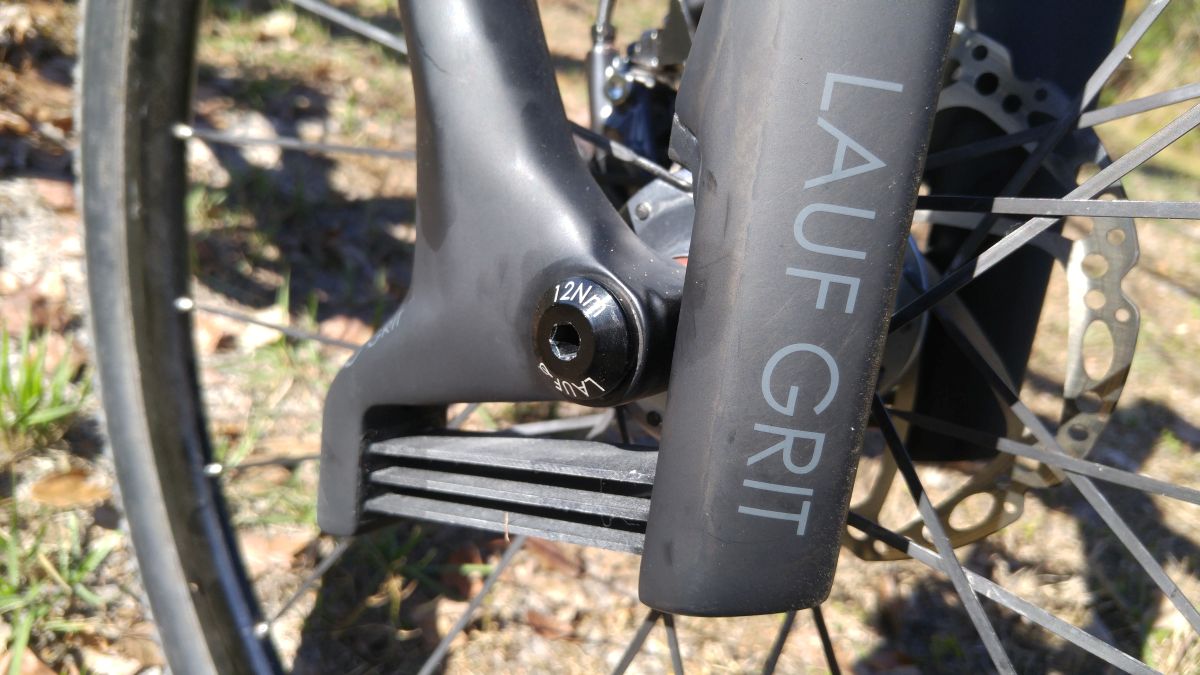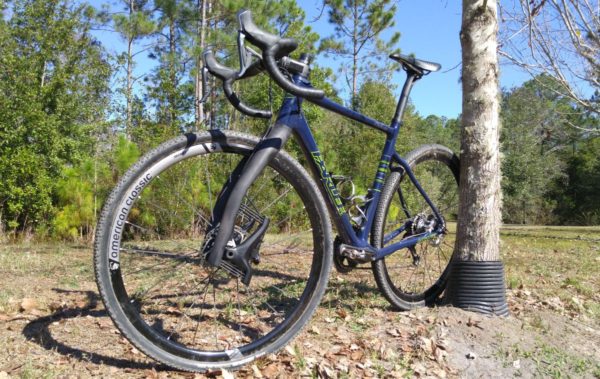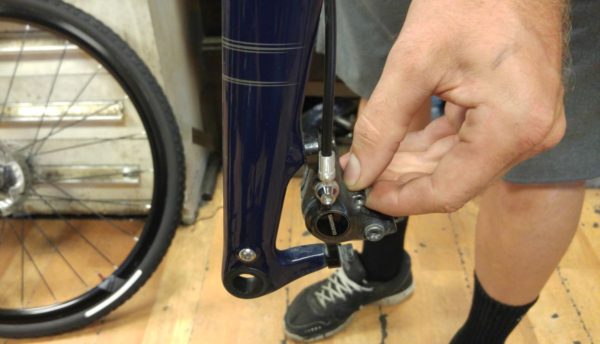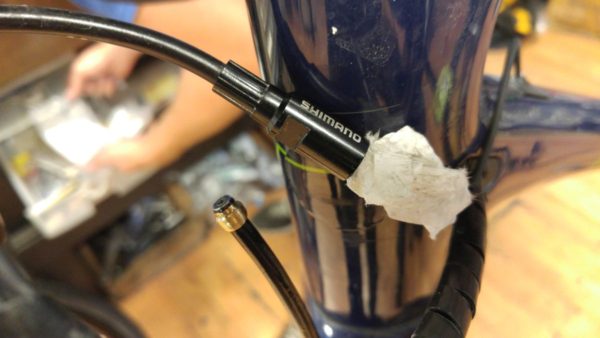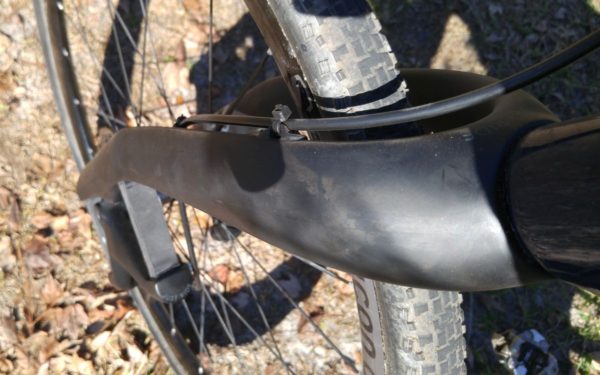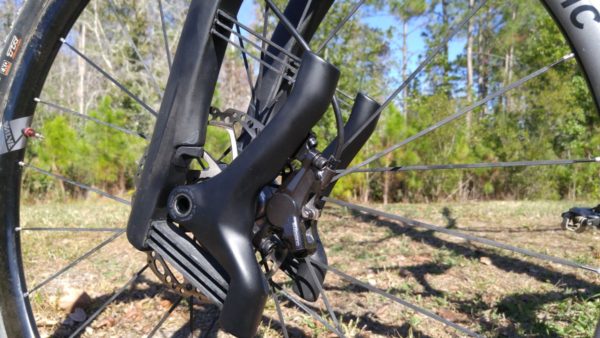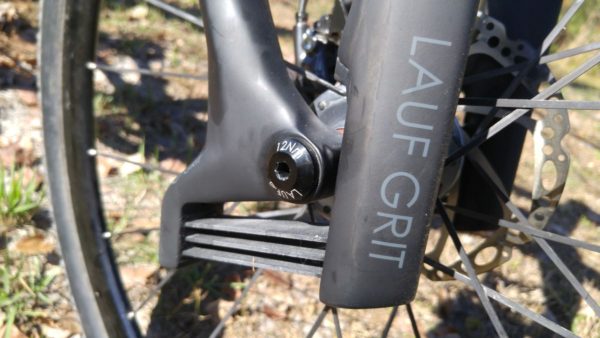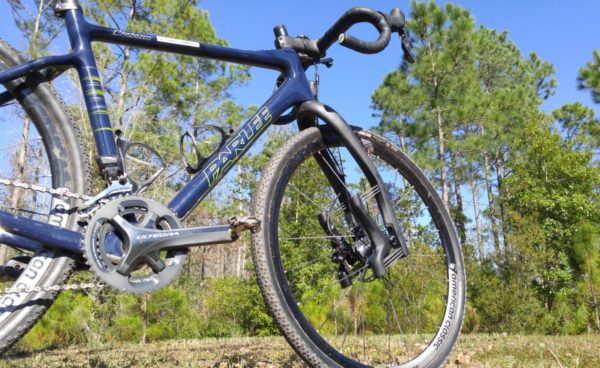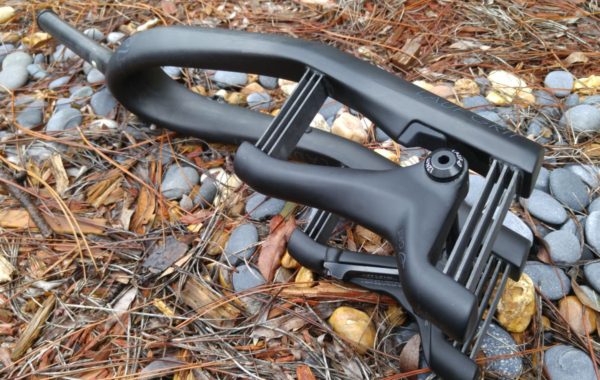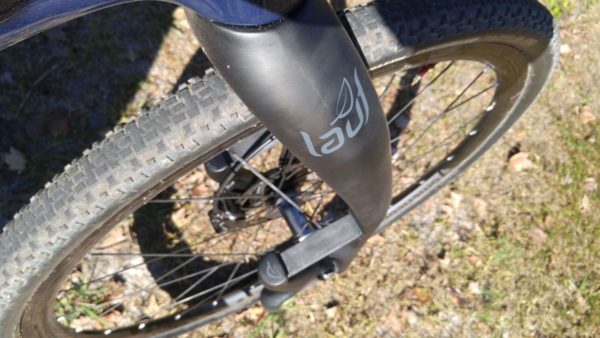Nowadays, it seems every manufacturer has a gravel bike on the market, or at least in the works and on the drawing board. Cyclocross bikes have served well for long excursions onto one’s favorite gravel roads, but manufacturers have taken those designs further with bikes tweaked for gravel cycling; changes to geometry, clearance for bigger tires and the ability to be ridden virtually anywhere. The slacker angles associated with many of these frames provides a measure of stability which instills confidence in the rider, and wider tires with lower air pressure ensure comfort and plenty of grip on loose gravel road surfaces.
Even with all of these design factors taken into account, bumps, potholes, stretches of washboarded roads and rough surfaces eventually fatigue a rider. A relaxed riding style that allows the bike to float over the worst of it certainly helps, but for prolonged time in the saddle, there is no way around the fatigue or discomfort factor. The Lauf Grit promises to take some sting out of the front end of a gravel bike, with it’s unique fork design that offers 30mm of travel and no moving parts.
How does that work? Click on through for more info and our review…
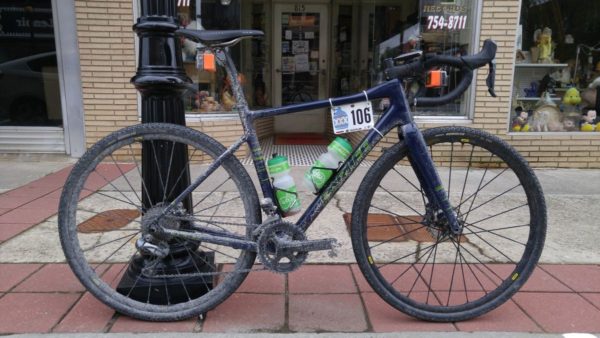
Tyler gave his first ride impressions on a preproduction version of the Grit fork early in 2016, whereas this review covers the production version. The Lauf Grit fork features all carbon construction, including the two lower segments, which are attached to the main body of the fork by Lauf’s S2 springs. These springs are made from military grade S2 glass fiber that Lauf claim is resilient and flexible in the direction of travel. Lauf have confidence in their product; they have stress tested the Grit for over 1,000,000 test cycles with at least 20mm of movement during each cycle. They back the fork with a five year warranty to the original owner, and offer a discounted crash replacement policy should the fork be damaged.
Installation of the fork is a relatively easy affair, provided you have the appropriate crown race. The Grit’s 300mm uncut carbon steerer tube tapers from 1 1/8″ to 1 1/4″ and is delivered with a 1 1/2″ crown race. However, my Parlee Chebacco test bike required a 1 1/4″ crown race – once that was sourced, installation could continue.
In the case of the Chebacco, the front hydraulic brake housing was routed internally through the stock fork, but Shimano’s handy hydraulic brake housings and connectors allowed the cable to be split and removed from the fork, saving time unwrapping and wrapping handlebar tape, etc.
The Grit’s steerer was cut to a suitable length and installed, brake housing routed and held in place with zip ties, re-connected and bled. Massive thank you to Martin of Super Cool Bike Shop for assisting with the installation. The Grit weighed 924 grams sans thru-axle before the steerer tube was cut. Compared to the Parlee’s stock fork at 426 grams cut, even with a small reduction in weight due to the reduced steerer length but nullified by the addition of the crown race, an additional 498 grams of weight was added to the bike. Holding the Parlee aloft, it felt noticeably heavier at the front end.
The Grit’s 30mm of travel features a progressive spring rate. In a nutshell, as the fork compresses further, the springs become stiffer. This is intended to prevent the fork from bottoming out while remaining sensitive to small bumps. I had concerns about the fork acting like a pogo stick, bobbing up and down during out of the saddle climbing or hard efforts. There is definitely a small amount of bob going on, but it is negligible and less than a well-behaved regular suspension fork with its lockout activated. Heavier riders may get the fork to bob more than I could – worth mentioning, I weigh between 154 – 158lbs. Rider weight limit is 242lbs / 110kgs.
Above, the thru-bolt axle (15mm in my case) resides between the lowers and moves relative to the upper which provides the suspension effect. On smooth gravel roads, the fork has a relatively neutral feel to it. With an axle to crown measurement of 409mm and 6mm of sag accounted for, the feel of your bike shouldn’t be affected too much. Fork rake is 47mm.
However, aesthetics are affected, and some riders will be unable to get past the unorthodox look of the fork – for some, it doesn’t win any style points, a fact I was constantly reminded of anytime I rode the Parlee / Grit fork in the company of others.
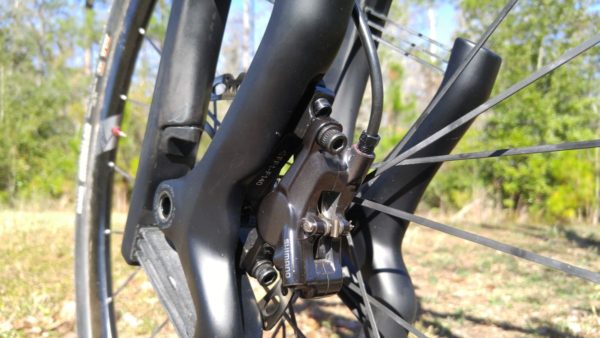
The Grit accepts a 160mm brake rotor at minimum, with options for a 12mm or 15mm thru-axle. Because I had a post-mount Shimano hydraulic brake on the Parlee, I had to install Shimano’s post mount to flat mount adapter in the 140mm size – this sounds incorrect, but that positions the caliper into the right position on the Lauf Grit. See Lauf’s website for installation tips.
With Maxxis Rambler 700c x 40mm tires mounted on an American Classic Argent disc brake wheelset, there is a stack of tire clearance beneath the fork. Lauf recommend a 700c x 42mm tire at max, but a 45mm tire will fit without any trouble. For 650B / 27.5″ wheels, the fork will accommodate a 2.1″ wide tire.
Regardless of looks, the Grit works. Riding over a consistent smattering of surface gravel, the fork is kept busy, nullifying fine bumps and taking the edge off. For bigger impacts such as potholes, the Grit doesn’t completely soak up the entire hit, but enough that the impact is reduced, helping the rider maintain control of the bike. This feature definitely helps for rough and tricky descents – you may notice the added weight of the fork on a long climb, but most riders will forget about that and appreciate the extra comfort and control on the descent. I could envisage this fork being very useful on courses like the original Iron Cross through the Michaux State Forest of Pennsylvania – where there are plenty of rocky descents!
Lateral stiffness – this has been a question for many riders considering these forks. I haven’t ridden the MTB versions, this is a task better suited for Bikerumor editors such as Zach. However, with just 30mm of travel, I didn’t notice any shift or sway in the wheel side to side. To further explore this potential issue, I took the Lauf and Parlee down some reasonably CX-bike friendly MTB trails; the Lauf Grit fork never skipped a beat, and continued taking an edge off the bumpy stuff.
In my video above, the fork’s main shortcoming is highlighted – the inability to deal with heavily washboarded roads. However, this issue also affects mountain bike suspension, hardtail or full. Suspension of any kind simply cannot rebound fast enough to offer any relief from the uncomfortable pounding of washboarded roads. In my experience, riding bigger, 2″ wide tires with low pressure at speed on a rigid gravel bike with big tire clearance, is the only way to feel any sort of relief from these road conditions. Washboard just isn’t any fun.
Update, May 2, 2017
Above, the Lauf engineers rode the Lauf Grit fork across a milder set of washboard road. It definitely performed better in this scenario.
The Grit fork isn’t for everyone, but it will appeal to riders looking to calm some of the harsher gravel roads out there, or those who desire a measure of comfort as they rack up the big gravel miles, training or racing. The zero maintenance aspect of the fork is another bonus – no seals or fluid to worry about, and no friction between moving parts either.
However, I’ll be switching the Parlee Chebacco back to its original, rigid carbon fork. I prefer the free suspension option of lower tire pressure and lower weight of the Chebacco’s stock fork – and I really need to return the Chebacco to Parlee soon – in stock form! If I had the physical storage space available, I would consider adding at least one Lauf-equipped gravel bike to my collection – cue the N+1 rule!
The Lauf Grit fork is priced at $US 790.00 and available directly from Lauf through their website.
Article, video and photos by Gravel Cyclist. Jayson O’Mahoney is the Gravel Cyclist: A website about the Gravel Cycling Experience.
